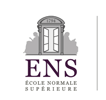Abstract
By the 20th century, 16th-century maps of Mexico City were not new, but their value was renewed by an urban elite grappling with the nation's historical geography. The capital saw fresh developments, including modern architecture and industry, while early excavations offered glimpses of Aztec Tenochtitlan buried beneath. This stratigraphic tension necessitated a reckoning; of concern here is the way that visual and intellectual cultures engaged in a particular cartographic reckoning. Colonial maps filled a void as artists, architects, art historians, and others worked to reconcile Mexico City’s modern identity with its ancient foundations.
Recommended Citation
Cosentino, Delia A.. "Colonial Maps and a Cartographic Reckoning in Post-Revolutionary Mexico City." Artl@s Bulletin 7, no. 2 (2018): Article 9.
Included in
History of Art, Architecture, and Archaeology Commons, Latin American Languages and Societies Commons






